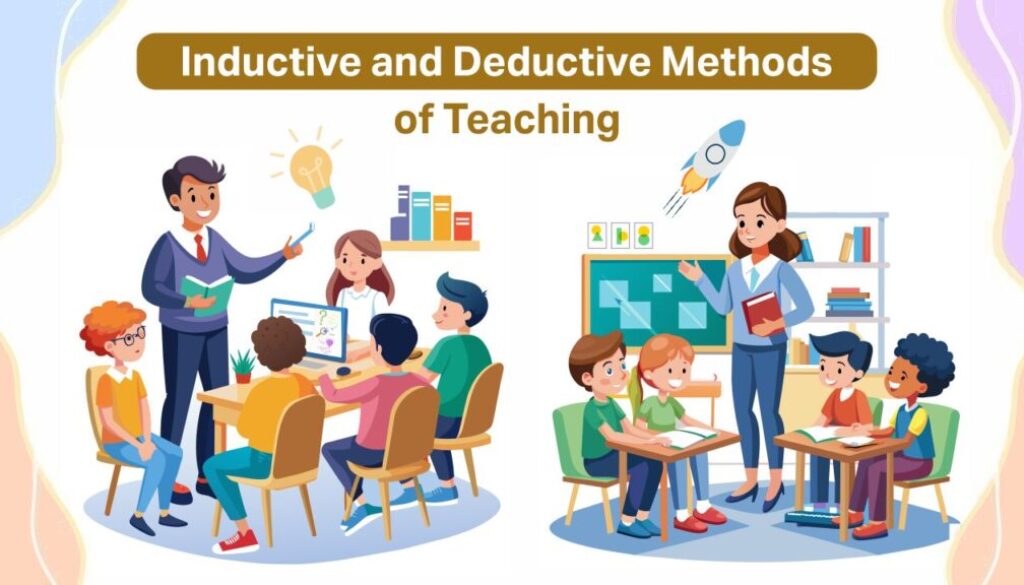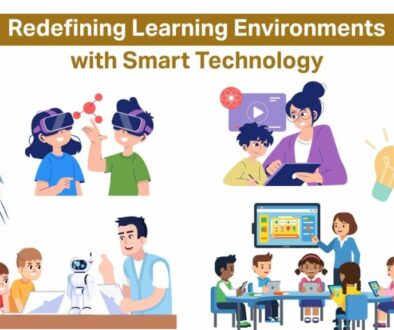The Inductive Method: A Transformative Teaching Approach
Today’s schools have opted for modern technology to spark curiosity and develop critical thinking among students. It means teaching in a classroom is no longer a traditional way of teaching where the teacher speaks, and the students listen.
There are various new teaching methods that have been developed, and one such method is the inductive method. This teaching method is followed at K.R. Mangalam World School (KRMWS), Lucknow, and this approach aligns perfectly with young minds.
What is the Inductive Method of Teaching?
The inductive method is the concept of teaching which starts with examples and observations instead of theory first. The method is quite the opposite of the traditional way of teaching.
Let’s simplify the classroom illustration with the inductive method: suppose students are learning English grammar “tenses”. To help students understand the concept of tenses, teachers first provide examples for them to examine. The method builds exploration abilities among students.
Why It Matters in Today’s School Environment
There are several compelling reasons to adopt the inductive method. Some of the key reasons are as follows:
- Promotes deeper understanding: Students just don’t understand rules fast; they determine the data and see the patterns to make their own understanding.
- Encourages engagement and ownership of learning: Encouraging students by letting them discover concepts that make them motivated.
- Builds analytical and metacognitive skills. The method enhances students’ analytical and critical thinking skills.
Inductive vs Deductive: What’s the Difference?
To appreciate the inductive method fully, it helps to contrast it with the more traditional deductive method of teaching.
- In the deductive method, the teacher presents the rule or concept first, explains it, then provides examples, practice, and exercises.
- In the inductive method, students encounter examples first, explore, identify patterns, formulate the rule themselves, and then apply it.
For example:
- Deductive: “Here is the formula for the area of a circle: πr². Now let’s look at problems.”
- Inductive: “Here are several irregular shapes made up of circles and segments. What relationships do you notice? Can you derive a formula for the area of a circle from these observations?”
According to recent research, inductive methods often lead to equal or improved learning outcomes compared with traditional deductive approaches—especially when it comes to understanding, retention, and the ability to apply concepts in new settings.
How This Looks in Practice at School
Let’s bring this to life with realistic classroom scenarios that could take place at schools.
Example 1 – Science (Physics):
In a lesson on motion, instead of starting with Newton’s laws, students might be shown short video clips or given data sets of objects sliding on surfaces with different friction. They record observations (time, distance, surface type), work in groups to identify patterns (e.g., “objects move slower on rough surfaces”), hypothesise how friction affects motion, and from this discussion, the teacher guides them to formulate the law of motion. The teacher then formally introduces Newton’s laws, linking them to what students discovered.
Example 2 – Language (English Grammar):
Rather than giving the rule for reported speech, students are given mixed dialogue sentences converted into reported speech. They compare pairs (direct → indirect), notice changes (pronoun, tense, time expressions) and propose a rule. After group discussion, the teacher formalises the grammar rules, followed by practice. Students feel empowered because they derived the rules themselves.
Example 3 – Mathematics (Geometry):
In a lesson on angles in a triangle, students measure angles of various triangles drawn on paper, note that the sum is always 180°, test several triangles (acute, obtuse, and right), and then articulate the rule “Sum of internal angles of any triangle = 180°”. Only then does the teacher generalise it and perhaps prove it with Euclidean reasoning.
These scenarios illustrate how the inductive method encourages students to question, explore, and internalise learning rather than passively receive it.
Benefits for Students at Top Schools in Lucknow
At premier CBSE schools in Lucknow, such as K.R. Mangalam World School, the inductive method adds significant value:
- Better readiness for higher-order thinking: As students progress to Class XI/XII, and eventually university, being able to reason, hypothesise and apply is more valuable than memorising.
- Active participation: The CBSE curriculum encourages application and critical thinking. Inductive teaching aligns with this shift.
- Stand-out in competitive exams and assessments: When students have rooted their understanding in discovery and exploration, they are better prepared for questions that test application, not just recall.
- Adaptability to change: In a world of rapid change, learners who can learn how to learn (via inductive methods) are more resilient.
Why KRMWS is Well-Suited for this Method
As one of the top CBSE schools in Lucknow, K.R. Mangalam World School provides an environment where the inductive method thrives. Some of the factors:
- The campus features smart classrooms, advanced laboratories and specialised creative & sports facilities.
- Our Signature Programmes emphasise experiential and interdisciplinary learning—ideal for inductive approaches.
- The house system (Topaz, Emerald, and others) encourages students to collaborate, reflect and present, which pairs well with exploratory learning.
- As a CBSE-affiliated school in Lucknow, we are attuned to the demands of modern pedagogy, including engaging with discovery-based learning.
How Parents and Students Can Support the Process
For this method to work smoothly, some habits and support on the part of students and parents help:
- Encourage curiosity: Ask children questions like “What do you notice?” or “Why do you think that happened?” rather than just asking for answers.
- Allow time for thinking: The inductive method is less about speed, more about depth. Appreciate that sometimes students may appear to “not cover” as much content in one lesson—but the understanding is richer.
- Value mistakes: Mistakes are part of the exploration process. A student’s wrong inference is a chance for discussion and learning.
- Support reflection: After a class, ask your child what patterns they noticed, what questions they posed. Reflection helps consolidate learning.
- Maintain open communication with teachers: At K.R. Mangalam World School, Lucknow, we encourage parents to engage with our educators about how their child is adapting to exploratory and inductive methods.
Conclusion
As teaching evolves, the inductive method of teaching is increasingly recognised as a powerful tool in the educator’s toolkit. For a school like K.R. Mangalam World School, Lucknow—which is committed to preparing students for a complex, changing world—embracing this method helps our learners not just know what and how, but why.
If you are looking for a school in Lucknow that combines a recognised CBSE curriculum with innovative teaching approaches, a campus that supports experiential learning, and a community oriented around the growth of each child, then you may wish to explore admissions at K.R. Mangalam World School, Lucknow.
FAQs
-
What is the inductive method of teaching?
The inductive method helps students to learn the concepts through simple examples and observation first, instead of just explaining the rules with theories. -
How is the inductive method different from the deductive method?
In the inductive method, students find their way to explore the rules, whereas in the deductive method, the teacher explains the rules first and then gives examples. -
Why is the inductive method effective for students?
It encourages curiosity among students with critical thinking and deeper understanding which helps them to retain knowledge and apply it in new situations. -
Does the inductive method take more time?
Yes, because the inductive method lets students explore and analyse the concept before rules, which makes their understanding stronger. -
Which is the top school in Lucknow?
The K.R. Mangalam World School ranks among the top schools in Lucknow.




